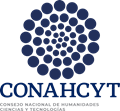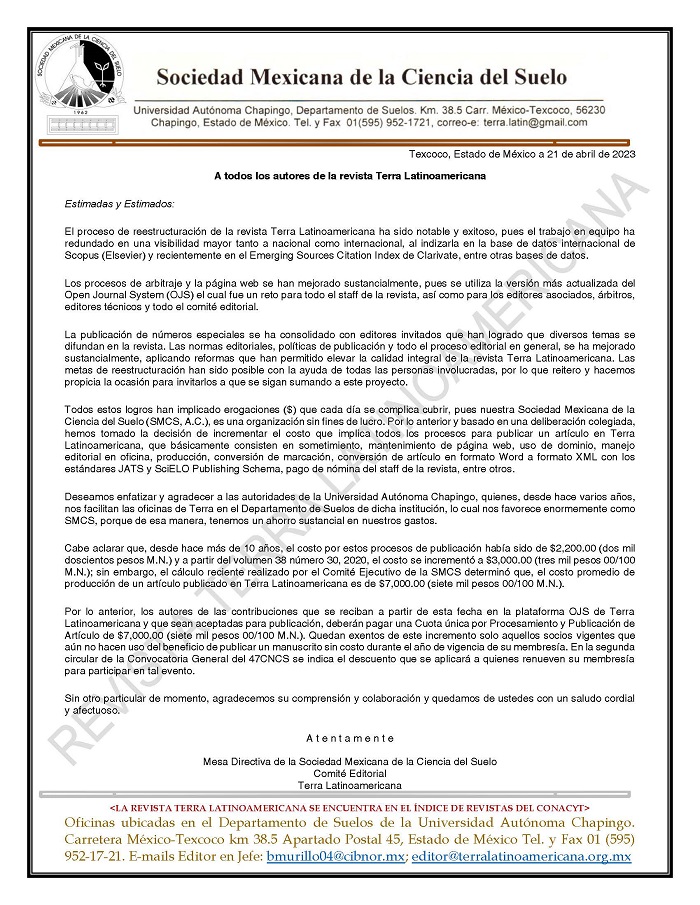Growth and Ef ficiency in the Use of Nutrients of Pinus cooperi C. E. Blanco Seedlings Produced in Nurseries with a Controlled Release Fertilizer
DOI:
https://doi.org/10.28940/terra.v41i0.1707Keywords:
forested plant quality, fertilization dosage, nutrimental statusAbstract
Fertilization is one of the most important and costly activities in forested plant production in container. The application of controlled release fertilizers (CRF) allows reducing costs since they are incorporated in the substrate in a single event. However, the optimum dosage should be defined based on the nutritional needs of each species. Thus, the objective of the present study is to determine the ef fect of three CRF doses on morphological growth and in nitrogen use ef ficiency (NUE) in Pinus cooperi C. E. Blanco plants in the nursery. Multicote 8® [18-6-12 of nitrogen (N), phosphorus (P), and potassium (K)] was used as fertilizer in three doses: 4, 6 and 8 g L-1 of substrate. At 49 weeks af ter sowing, the following evaluations were performed: stem base diameter, height, aerial and root dry weight and their relationship. A leaf analysis of N, P and K was performed to determine the nutritional status of the plants by a vector analysis and estimate the NUE. The treatments were analyzed under a completely randomized design with an analysis of variance (ANOVA) and Tukey’s means test. The individuals fertilized with the 6 and 8 g L-1 dosage had better morphological attributes. The shoot-to-root ratio maintained the desirable values in all the treatments. The N, P, and K contents were higher with the 6 and 8 g L-1 doses, although NUE increased as the CRF dose decreased. The vector nomograms indicated that a high dosage does not have the ef fect on growth, actually toxicity may exist due to excessive fertilization. In conclusion, the 6 g L-1 CRF dose favors P. cooperi growth and nutrition in the nursery.
Downloads
Publication Facts
Reviewer profiles N/A
Author statements
- Academic society
- Terra Latinoamericana
- Publisher
- Mexican Society of Soil Science, C.A.

















